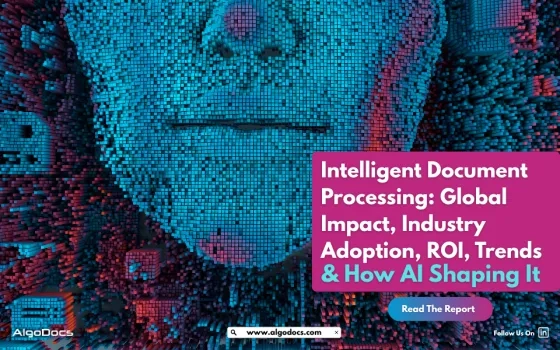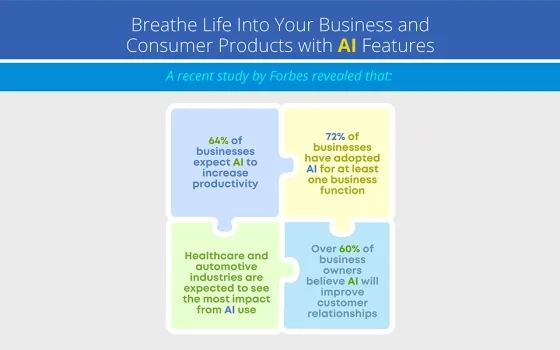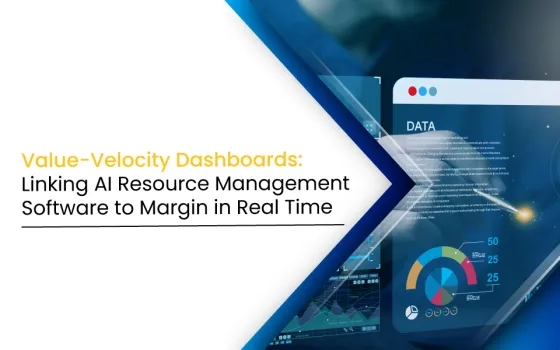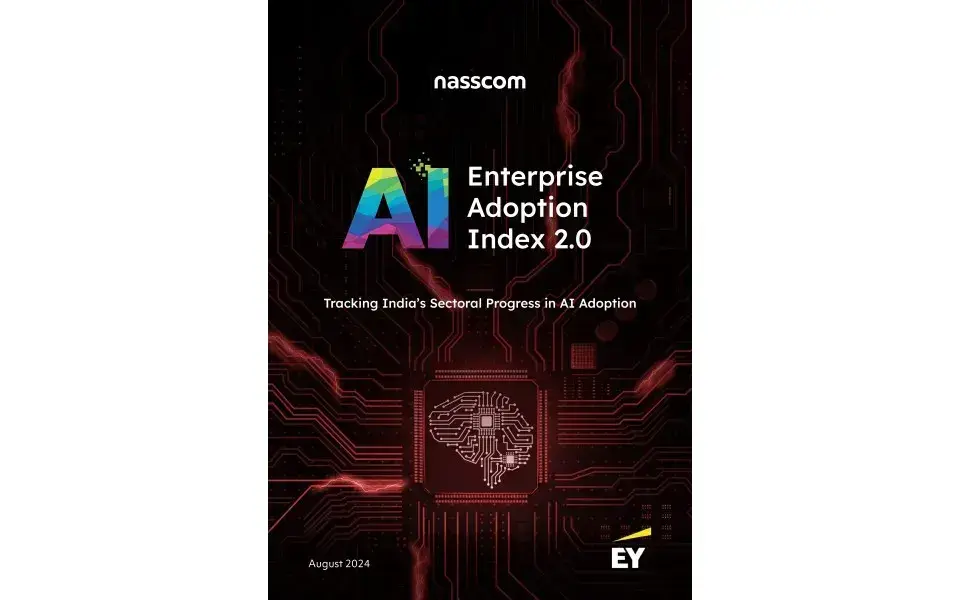Data extraction has long been a fundamental aspect of business operations across industries. Whether it's for record keeping, financial transactions, compliance documentation, or customer onboarding, the ability to accurately extract and process data from documents is crucial. Historically, businesses relied on manual processes or basic rule-based systems, which often proved inefficient, error-prone, and difficult to scale—especially with the increasing volume of unstructured data.
Today, the landscape has changed dramatically. Intelligent Document Processing (IDP)—powered by technologies such as Optical Character Recognition (OCR), machine learning, natural language processing (NLP), computer vision, and workflow automation—has emerged as a transformative solution. Once a niche innovation, IDP is now a core pillar of digital transformation. Over the past decade, IDP has delivered double-digit compound annual growth rates (CAGR), substantial cost savings, and measurable productivity gains across sectors like finance, healthcare, insurance, manufacturing, logistics, and public services.
This article delves into the global trajectory of IDP, its industry adoption, the tangible return on investment (ROI) it offers, and the evolving role of artificial intelligence in shaping its future.
The Global Market Trajectory of IDP
The global IDP market is experiencing unprecedented growth, driven by the explosion of unstructured data and the pressing need to automate compliance-heavy workflows. Leading analyst firms project robust growth, estimating market values ranging from $2.3 billion to nearly $8 billion in 2024 alone. Forecasts for 2028–2034 predict the market could soar to anywhere between $7 billion and $66 billion, depending on the source.
For example:
- Grand View Research projects growth from $2.3 billion in 2024 to $12.35 billion by 2030, with a 33.1% CAGR, led by North America.
- Research & Markets anticipates a rise from $2.33 billion to $7.14 billion by 2028.
- Markets & Markets forecasts an increase from $1.1 billion in 2022 to $5.2 billion by 2027.
- Fortune Business Insights offers the most bullish estimate, from $7.89 billion to $66.68 billion by 2032.
These projections are underpinned by three key macro trends:
- Regulatory pressure is increasing the demand for auditable, traceable data.
- Labor shortages in back-office functions are accelerating automation efforts.
- AI breakthroughs are allowing enterprises to extract not just text but context from diverse document types, boosting both accuracy and efficiency.
Evolution of Data Extraction Technologies
The journey from basic OCR to today’s advanced IDP systems has been marked by significant technological milestones. Early OCR systems digitized printed text but struggled with complex formats, handwritten inputs, and low-resolution scans—achieving only 60–75% accuracy, insufficient for mission-critical processes.
The second generation, featuring machine learning-based OCR, improved accuracy to around 85–90% on semi-structured forms. However, these systems still depended on static templates and lacked adaptability across document types.
Modern IDP platforms have redefined the field by incorporating deep learning, computer vision, transformers, and large language models (LLMs). These innovations deliver field-level accuracy exceeding 95% on unstructured documents. Additionally, generative AI and few-shot learning have slashed the time and effort needed to train models for new document types—cutting training time by up to 85%.
Quantified Business Impact of IDP
The business value of IDP is both significant and multifaceted, with organizations reporting major improvements in operational speed, accuracy, cost efficiency, and compliance.
Speed and Throughput Improvements:
- Invoice approval cycles have shrunk from 10–15 days to under two days—an 80% reduction.
- Claims intake that once took 2–3 hours now completes in under 30 minutes.
- Export bill processing timelines in banking have dropped from three days to two.
- Supply chain contract reviews for 40-page documents now take one hour instead of five.
- In manufacturing, manual data entry has been replaced by real-time autoposting.
Accuracy Gains:
- AI-assisted medical documentation has reduced errors by 70%.
- Generative IDP systems achieve up to 99.9% data extraction accuracy across varied document sets.
- Fraud detection in insurance has improved by 50% due to better analysis of claim narratives.
Cost Savings:
- Accounts payable automation yields an annual ROI of 100–460%.
- Invoice processing costs have dropped from $12–$35 to just $5—a savings of up to 86%.
- Manufacturing firms report an 85% reduction in labor hours for invoice handling.
- AI-driven logistics solutions provide 2–3x higher ROI than traditional tools and cut fuel costs by 10–20%.
Compliance Enhancements:
- BFSI firms report 40–60% faster Know-Your-Business (KYB) and Anti-Money Laundering (AML) checks due to real-time corporate record extraction and watchlist screening.
Sector-by-Sector Adoption of IDP
Banking, Financial Services, and Insurance (BFSI):
With document-heavy operations and strict regulatory requirements, BFSI has led IDP adoption. Around 71% of Fortune 250 financial institutions have implemented IDP solutions for use cases like onboarding, loan processing, and claims.
- Export bill handling time has been reduced by 33%.
- Manual KYB data entry has been cut by 90%.
- Fraud detection has seen a 50% boost.
- Digital audit trails now replace cumbersome paper-based systems.
Healthcare and Life Sciences:
IDP is transforming medical workflows, from clinical documentation to prior authorizations and EHR data entry.
- AI scribes reduce clinician admin work by 45–60 minutes per shift.
- ICD coding accuracy exceeds 95%, lowering claim denials.
- Note generation error rates remain at 8.9%, raising concerns around liability—but the operational gains are undeniable.
Insurance:
Insurance firms use IDP to accelerate claims processing, underwriting, and policy servicing.
- Claims processing speed has increased by 60%.
- Fraud losses have been halved.
- Net Promoter Scores (NPS) have improved by 25–30 points.
Manufacturing and Supply Chain:
Manufacturers and logistics providers rely on IDP for order management, shipping documentation, and safety compliance.
- Invoice capture time reduced by 85%.
- Flexport processes 15,000 shipping documents monthly, saving 80% of manual labor.
- AI-based route optimization lowers transportation costs by 5–10% and boosts reliability by 20%.
Government and Public Sector:
Government agencies are embracing IDP for transparency and efficiency.
- The U.S. State Department streamlined the review of over 4 billion cables using machine learning.
- The National Archives' AI bot accelerates DD-214 data extraction for veterans.
- In the UK, IDP-enabled pilots have shown success in semi-automated document screening for public records.
Measuring ROI in IDP Projects
A holistic ROI framework for IDP includes:
- Direct labor savings
- Error-cost avoidance
- Early payment discounts
- Cash flow acceleration
- Compliance-related risk mitigation
Key cost inputs include software licensing, cloud usage, integration, and change management. Benefits are calculated through metrics like reduced processing time, per-invoice cost savings, and avoided regulatory penalties.
ROI Formula:
ROI = (Benefits – Costs) ÷ Costs × 100%
Enterprises typically achieve ROI breakeven in 6–9 months—especially in accounts payable and claims processing projects.
Real-World Case Studies
- IndusInd Bank automated export bill handling, cutting processing time by 33%.
- A Fortune 50 insurer implemented IDP to handle complex long-term care claims.
- Flexport reduced manual work by 80% by automating contracts and bills of lading.
- U.S. State Department used AI to scale declassification of diplomatic cables.
- A North American hospital slashed documentation errors by 70% with AI-powered note generation.
These case studies highlight how IDP drives real outcomes across accuracy, speed, and cost.
Future-Facing Trends in IDP
Generative AI:
LLMs trained on domain-specific documents can now perform data extraction with fewer than 20 labeled samples. This few-shot learning enables rapid deployment and low training costs. In BFSI, it's powering on-demand loan offers and auto-drafted policies.
Hyperautomation:
IDP is increasingly integrated with RPA, process mining, and low-code tools, allowing end-to-end automation across departments. This shift from task-based to workflow-level automation multiplies efficiency gains.
Cloud-Native Deployments:
Cloud adoption is now twice as prevalent as on-premises, driven by scalability and usage-based pricing. This flexibility simplifies ROI tracking and reduces infrastructure overhead.
Regulatory Frameworks:
Laws like the EU AI Act and NIST’s Risk Framework are increasing compliance demands. IDP solutions that support document provenance and traceability are now in higher demand than ever.
Implementation Pitfalls and How to Avoid Them
- Poor Data Quality: Use curated training sets and enable human-in-the-loop validation.
- Change Resistance: Invest in training and stakeholder engagement to smooth transitions.
- Model Drift: Monitor accuracy regularly and retrain quarterly to adapt to new formats.
- Security Concerns: Adopt zero-trust architectures and enable redaction of sensitive data to maintain compliance.
Conclusion
Intelligent Document Processing has evolved from a back-office tool to a strategic engine for digital transformation. By reducing cycle times, eliminating manual errors, and enabling skilled professionals to focus on high-value work, IDP offers triple-digit ROI across sectors.
BFSI and healthcare are leading adoption due to their high regulatory requirements, but sectors like manufacturing, insurance, logistics, and government are rapidly catching up. Generative AI is poised to propel the next phase of IDP, making document processing smarter, faster, and more context-aware.
As organizations implement robust data governance, change-management frameworks, and AI retraining loops, they position themselves for long-term competitive advantage. With global IDP spending expected to exceed $60 billion by 2032, the time to invest in intelligent automation is now.
- https://www.grandviewresearch.com/industry-analysis/intelligent-document-processing-market-report
- https://www.marketsandmarkets.com/Market-Reports/intelligent-document-processing-market-195513136.html
- https://www.researchandmarkets.com/reports/5806873/intelligent-document-processing-global-market?srsltid=AfmBOoqpgiXcW0RzYEjLelL9eSfoFvOMNUdtTxZ7XOKkY3bMA6CjB35U
- https://www.prnewswire.com/news-releases/intelligent-document-processing-market-size-to-grow-by-usd-3-34-billion-from-2022-to-2027--the-integration-of-idp-software-with-ml-is-the-major-trend-in-the-market-technavio-302082901.html
- https://www.fortunebusinessinsights.com/intelligent-document-processing-market-108590
- https://straitsresearch.com/report/intelligent-document-processing-market
- https://exactitudeconsultancy.com/reports/45618/tr
- https://techbullion.com/the-rise-of-ai-in-document-processing/
- https://www.linkedin.com/pulse/hidden-dangers-ai-clinical-documentation-911-accuracy-sharma-ron--q3zkc
- https://www.amygb.ai/blog/use-cases-to-establish-idps-potential-in-the-manufacturing-industries
- https://www.datamatics.com/intelligent-automation/solutions/manufacturing
- https://aws.amazon.com/marketplace/pp/prodview-dkrv3oj7j7h7c
- https://www.cmswire.com/digital-experience/wheres-the-generative-ai-roi-start-with-the-supply-chain/
- https://www.linkedin.com/pulse/documenting-future-how-idp-ushering-generative-ai-era-sai-sunil-pgsie
- https://www.infosysbpm.com/blogs/apoc/accounts-payable-automation-roi.html
- https://www.highradius.com/resources/Blog/ap-automation-roi/
- https://indicodata.ai/blog/how-intelligent-document-processing-idp-transforms-claims-management/
- https://www.ant.works/wp-content/uploads/2022/04/IDP-210412-Everest-Accelerating-Automation-in-Banking-with-IDP-and-IndusInd-Case-Study-AntWorks.pdf
- https://easymonk.app/14-use-cases-of-idp-in-manufacturing-company/
- https://blog.quadrant.health/ai-medical-documentation-accuracy/
- https://www.docsumo.com/blogs/intelligent-document-processing/intelligent-document-processing-market-report-2025
- https://www.linkedin.com/pulse/how-intelligent-document-processing-idp-transforms-vqsrc
- https://www.scnsoft.com/financial-management/automated-invoice-processing
- https://www.sdcexec.com/software-technology/ai-ar/news/22936890/deposco-inc-ai-adoption-already-achieving-breakthrough-roi-for-supply-chain-organizations-study
- https://www.jusdaglobal.com/en/article/roi-of-ai-inventory-route-planning/
- https://cedaribsicapital.vc/how-intelligent-document-processing-idp-transforms-kyb-compliance-in-bfsi/
- https://glib.ai/blog/ai-idp-bfsi-compliance
- https://www.sully.ai/blog/improving-documentation-accuracy-in-medicine-through-ai
- https://pubmed.ncbi.nlm.nih.gov/39703286/
- https://articles.xebia.com/how-intelligent-document-processing-is-revolutionizing-insurance
- https://articles.xebia.com/transforming-customer-service-and-operational-efficiency-in-insurance-with-intelligent-document-processing
- https://fedscoop.com/how-the-state-department-used-ai-and-machine-learning-to-revolutionize-records-management/
- https://www.geekwire.com/2023/how-the-national-archives-is-using-ai-to-make-records-more-accessible-in-the-digital-age/
- https://www.nationalarchives.gov.uk/information-management/manage-information/preserving-digital-records/research-collaboration/using-ai-for-digital-selection-in-government/
- https://vidizmo.ai/blog/ai-in-government-records-management
- https://www.tagovcloud.com/2023/08/harnessing-ai-in-government-records-management/
- https://stripe.com/resources/more/what-is-the-roi-of-ap-automation-a-guide-for-businesses
- https://www.linkedin.com/advice/1/how-do-you-measure-roi-invoice-processing-automation
- https://provectus.com/wp-content/uploads/2023/04/Provectus_Guide_Removing_Barriers_to_AI_Adoption_in_Doc_Processing.pdf
- https://www.nomos-elibrary.de/10.5771/0042-059X-2021-3-340.pdf
- https://www.grandviewresearch.com/press-release/global-intelligent-document-processing-market
- https://info.aiim.org/aiim-blog/unlock-the-future-of-document-management-how-ai-is-revolutionizing-intelligent-document-processing
- https://www.technavio.com/report/intelligent-document-processing-market-analysis
- https://appinventiv.com/blog/ai-in-document-processing/
- https://zipdo.co/idp-industry-statistics/
- https://www.alliedmarketresearch.com/press-release/intelligent-document-processing-market.html
- https://www.meticulousresearch.com/product/intelligent-document-processing-market-5774
- https://capacity.com/intelligent-document-processing/faqs/what-is-the-idp-market-size/
- https://www.zionmarketresearch.com/report/intelligent-document-processing-market
- https://www.infrrd.ai/blog/insurance-growth-intelligent-document-processing
- https://www.ant.works/content-hub/everest-group-accelerating-automation-in-banking-with-idp-featuring-indusind-bank-case-study/
- https://pmc.ncbi.nlm.nih.gov/articles/PMC11658896/
- https://lumenalta.com/insights/a-coo-s-guide-to-high-impact-ai-for-supply-chain-roi
Disclaimer: The data and insights presented in this article are intended solely for educational purposes and do not reflect the views or endorsements of AlgoDocs. Any claims or interpretations made herein are not supported by AlgoDocs or its authors. Readers are encouraged to conduct their own research before making decisions based on the information provided.




















